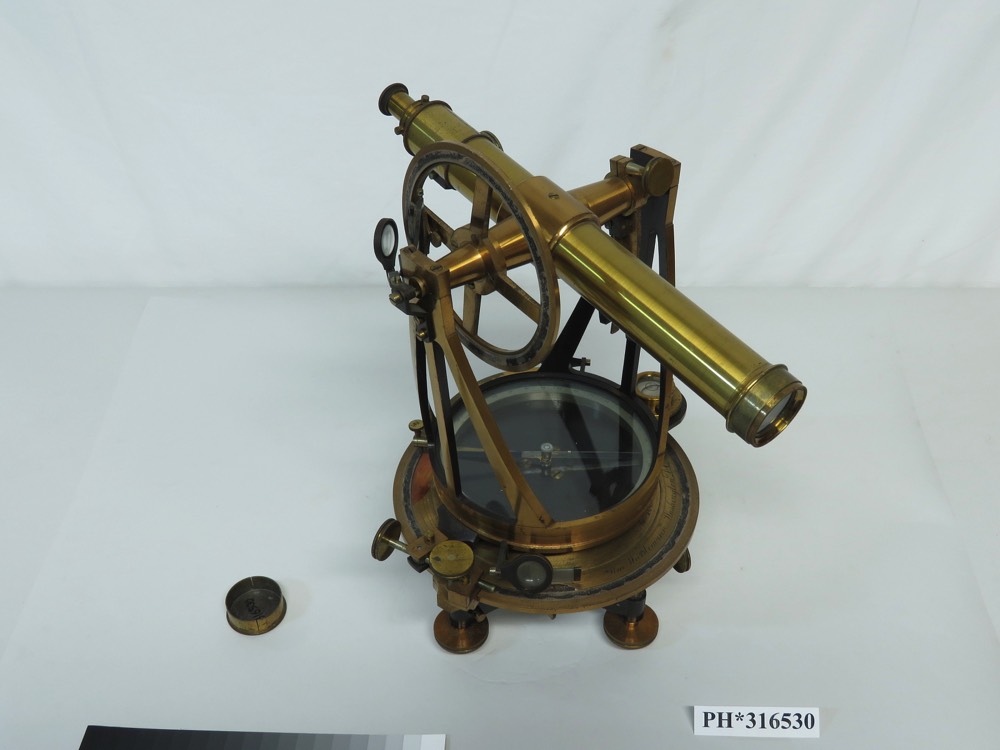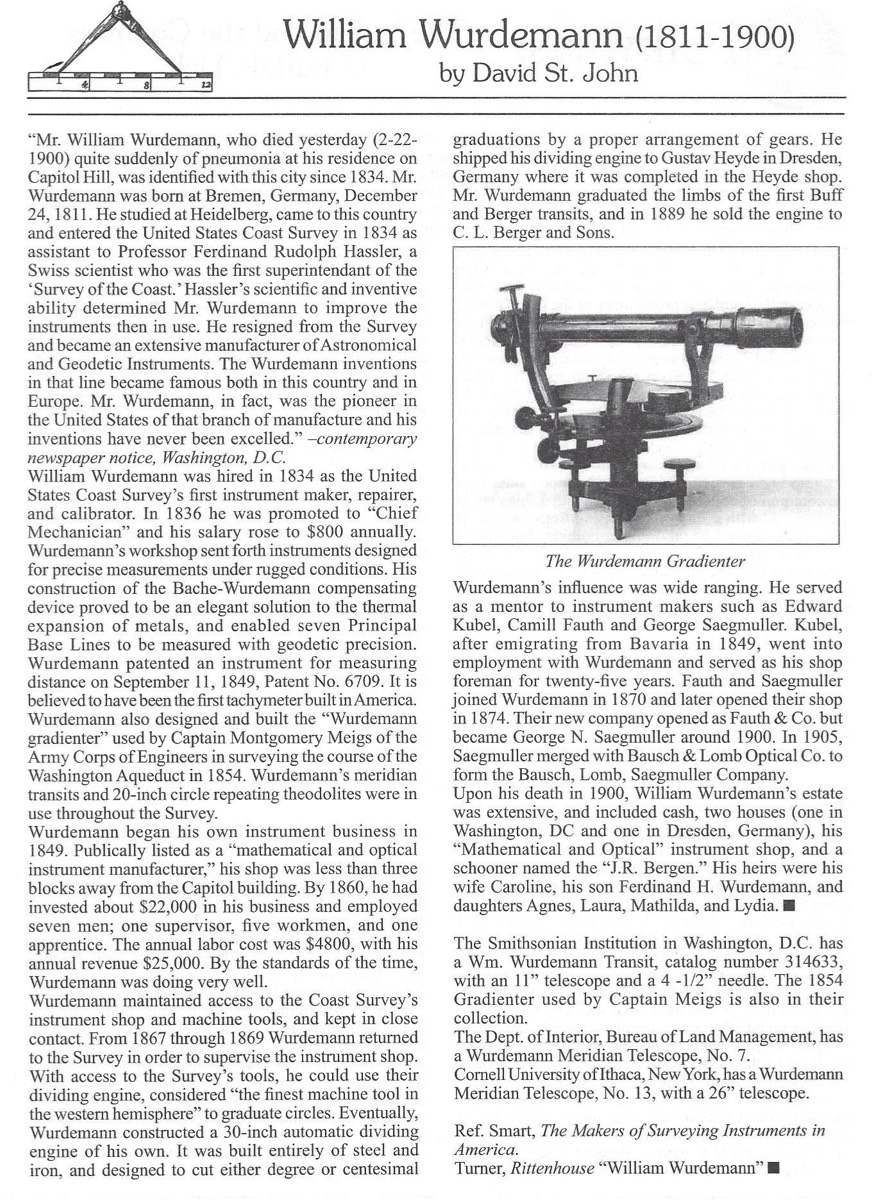
William Würdemann
History
William Würdemann
(1849–1881)
William Wuerdemann (1811–1900) was born in Bremen named Wilhelm C. F. Wuerdemann, he studied in Heidelberg, Germany. He immigrated to the US in 1834, having been brought to the United States by the first Director of the Coast Survey Professor Ferdinand Rudolph Hassler, a Swiss scientist. Wuerdemann was the United States Coast Survey's first instrument maker, repairer, and calibrator. After several years there his excellent scientific and inventive ability for improving the instruments became obvious. In 1836, having proved his worth, Würdemann became the Survey’s Chief Mechanician and his salary rose to $800 annually, he continued in that position until 1849. He worked intermittently for the Survey (1834-1836, 1848, 1870-1874) and as an independent instrument maker; he made some of the early instruments of the US Coast Survey. Würdemann is known for having “a decided influence on observers and instrument makers throughout the United States, as he introduced among us extreme German methods where extreme English methods had formerly prevailed”.
Wurdemann's workshop sent forth instruments designed for precise measurements under rugged conditions. His construction of the Bache-Wurdemann compensating device proved to be an elegant solution to the thermal expansion of metals, and enabled seven Principal Base Lines to be measured with geodetic precision. Wurdemann patented an instrument for measuring distance on September 11, 1849, Patent No. 6709. It is believed to have been the first tachymeter built in America. Wurdemann also designed and built the "Wurdemann gradienter" used by Captain Montgomery Meigs ofthe Army Corps of Engineers in surveying the course of the Washington Aqueduct in 1854. Wurdemann's meridian transits and 20-inch circle repeating theodolites were in use throughout the Survey. The Wurdemann inventions in that line became famous both in this country and in Europe.
Wurdemann resigned from the Coast Survey in 1849 and became an extensive manufacturer of Astronomical and Geodetic Instruments advertising as a Mathematical and Optical Instrument Manufacturer. Publically listed as a "mathematical and optical instrument manufacturer," his shop was less than three blocks away from the Capitol building. By 1860, he had invested about $22,000 in his business and employed seven men; one supervisor, five workmen, and one apprentice. The annual labor cost was $4800, with his annual revenue $25,000. By the standards of the time, Wurdemann was doing very well. Wurdemann maintained access to the Coast Survey's instrument shop and machine tools, and kept in close contact.
He supervised the Survey’s instrument shop in 1867–1869; his son Charles worked in that shop in the early 1870s; and he always had easy access to their dividing engine and other machine tools. With access to the Survey's tools, he could use their dividing engine, considered "the finest machine tool in the western hemisphere" to graduate circles. Eventually Wurdemann constructed a 30 inch automatic dividing engine. It was built entirely of steel and iron and so designed that by a proper arrangement of gears it could cut either degree or centesimal graduations. He shipped the dividing engine to Gustav Heyde in Dresden, Germany where it was completed in the Heyde shop. Heyde was making one for his own use at the same time that Wurdemann shipped his nearly completed engine to Heyde. Mr. Wurdemann graduated the limbs of the first Buff & Berger transits, and in 1899 he sold the engine to C. L. Berger & Sons.
While the Coast Survey was Würdemann’s most important customer, he made instruments for other federal agencies as well. Würdemann also helped Camill Fauth, Edward Kubel, George N. Saegmuller, and other German instruments makers get their start in the United States. After Kubel emigrated from Bavaria in 1849, went into employment with Wurdemann and served as his shop foreman for twenty-five years. Fauth and Saegmuller joined Wurdemann in 1870 and later opened their own shop in 1874. Würdemann’s shop closed in 1881.
Wurdemann resided in Washington until his death Feb. 22, 1900 having died suddenly of pneumonia at his residence, 204 Delaware Avenue NE on Capitol Hill. William Wurdemann's estate was extensive, and included cash, two houses (one in Washington, DC and one in Dresden, Germany), his "Mathematical and Optical" instrument shop, and a schooner named the "l.R. Bergen." His heirs were his wife Caroline, his son Ferdinand H. Wurdemann, and daughters Agnes, Laura, Mathilda, and Lydia. Wurdemann’s Washington house was demolished around 1910 to make way for park land and a Senate office building.
Labels

Article#1
Article #2

© 2020 Russ Uzes/Contact Me